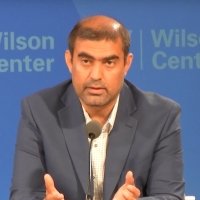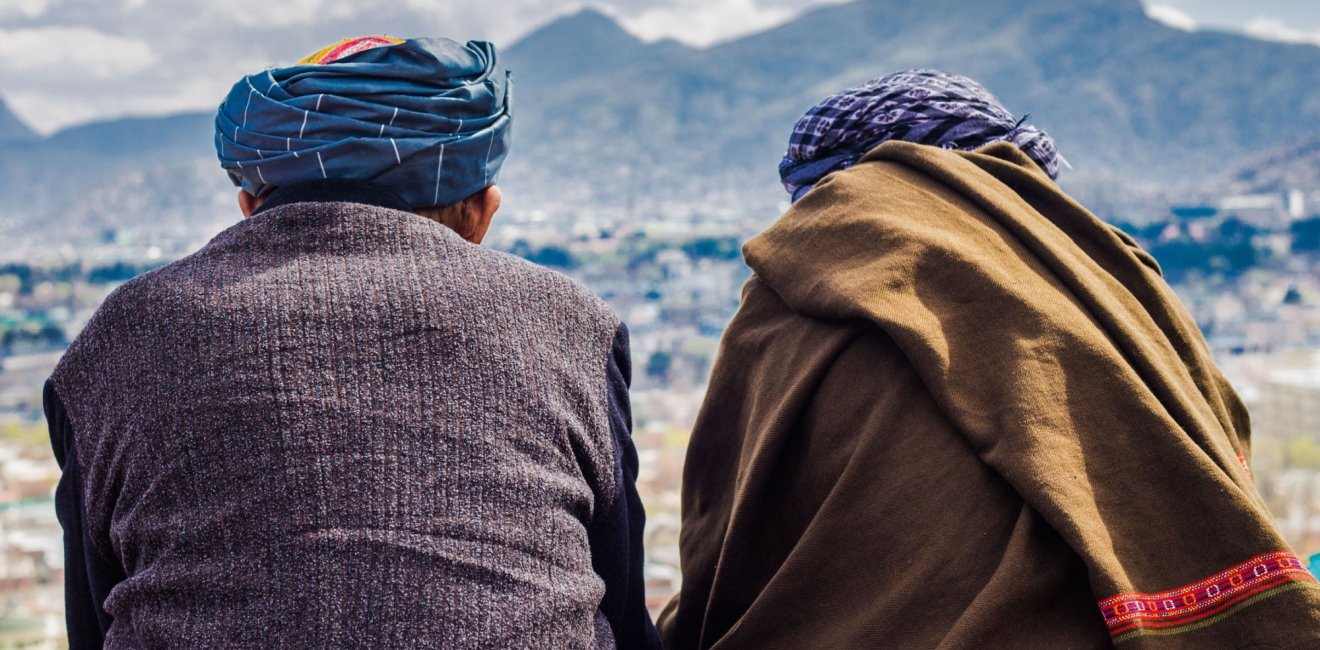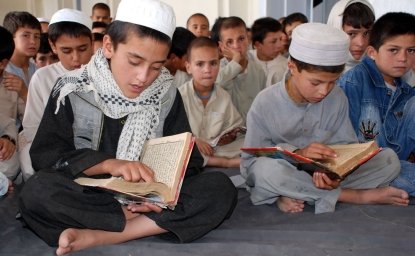
A blog of the Indo-Pacific Program
For nearly half a century, Afghanistan has been embroiled in conflict. Many observers believe regional rivalries have fueled this crisis, while others attribute the roots of the conflict to broader geopolitical factors. Afghan leaders themselves have placed the blame on external culprits. These external factors have certainly played a role in the conflict. However, the core cause of the conflict is found inside Afghanistan: An ongoing identity crisis with no end in sight. Put simply, the sociotechnical makeup of Afghanistan lies at the heart of the country's 50-year struggle.
Outsourcing Blame Abroad
Consider what Afghanistan’s rulers have done over its recent history: Mohammad Daud (1973-1978) annexed Pashtunistan from Pakistan. The socialist government (1978-1992) made ideological enemies outside Afghanistan. Mujahideen forces (1992-1996) accused Pakistan of sponsoring the Taliban. The Taliban (1996 to 2001) condemned the U.S. and West for intervening in Afghanistan’s affairs. And governments post-2001 insisted that the roots of all Afghanistan’s challenges lay outside the country.
Major power meddling in other nations through proxies is a normal occurrence and in fact integral to the international system. But plenty of nations are not victimized by meddling. Many countries in Europe, America, Asia, and Africa have existed in peace and stability since their founding, with no outside meddling, despite having small sizes, weak economies, and limited resources.
Since the founding of modern Afghanistan in the second part of the 19th century, there have been contradictory historical memories concerning the country’s existence, which has hampered the nation-building process. There are some identity-based narratives, like the Tajik and Pashtun narratives, which have occasionally been forced on other Afghans by those in positions of authority. Other narratives have been left on the periphery.
The element of ethnicity is an undeniable fact in the evolution of the contemporary history of Afghanistan. Ethnic-based narratives have been so strong in the country that not even the ideologies of the Cold War era—especially socialism and Islamism, which served as a unifying force for many fragmented peoples—could dislodge them. Indeed, in many countries around Afghanistan, socialism and Islam drove people out of their ethnic groupings and united them together in the name of lofty ideals. But in Afghanistan, they were distorted by the swamp of ethnic narratives.
Instead of unifying the nation, the grand ideologies of socialism and militant Islam rekindled the identity narratives that had long existed in Afghan society. As a result, the end of the armed conflict between socialism and militant Islam brought the emergence of a quasi-feudal society with islands of ethnic power centered on conflicting identities.
Ethnic Narratives of Dominance
With the fall of the Taliban and the formation of a new government after 2001, Afghanistan underwent reconstruction, state building, and development. Huge financial contributions from donors, the formation of power mafia circles, and the advocacy of the Afghan diaspora for democratization and human rights prevented Afghan governments from addressing the main issue: the increasing hegemonic mood among the ruling elites and intellectuals, and on the ground among the common people. This has been the business of the majority of deprived people, expressed in the form of contested identities.
Within some parts of the power mafia, a small elite would pretend to play national unity politics without ethnic concerns. However, the ground reality was totally different. Across the entire political-social and economic fabric of Afghanistan, ethnic groupings were entrenched. Elites, intellectuals, civil society activists, journalists, think tanks, universities, and even charitable institutions were confronting a total ethnic clash through mindsets and behaviors, and based on a hegemonic mood. And few Afghans and non-Afghan scholars have bothered to point out this bitter reality.
In the past 20 years, every ethnic sub-identity joined Afghan politics and power with a dominant mindset. Even the tribes with the smallest populations perceived themselves as an iceberg looking for cultural and identity support from outside of Afghanistan. In effect, every ethnic group, no matter how big or small, wanted to assert its dominance over others.
More than 30 ethnic groups can be found in Afghanistan and beyond. And in fact the emergence of Afghanistan as a nation state meant that many groups found themselves separated from their ethnic kin in neighboring states.
Afghanistan's geography—it is a gateway to South Asia, the Middle East, and Central Asia—means that many of the same ethnic groups are based both in Afghanistan and in neighboring countries. More than 30 ethnic groups can be found in Afghanistan and beyond. And in fact the emergence of Afghanistan as a nation state meant that many groups found themselves separated from their ethnic kin in neighboring states. Tajiks were split from their relatives in Tajikistan, Uzbekistan, Pakistan, China and Iran; Pashtuns from their relatives in Pakistan; and Uzbeks from their relatives in Uzbekistan and Tajikistan. There are also, in Afghanistan, Turkmen from Turkmenistan, and Gujar, Kyrgyz, and Kazakh from other Turkmen-speaking countries. The religious sub-identity of Afghanistan's Hazaras—who saw themselves as co-descendants of those in Iran—remains a dominating narrative with a domineering attitude in central Afghanistan.
The strengthening of hegemonic and at the same time hostile narratives among Afghanistan ethnic groups has produced hyper-localism and the politics of ethnocentrism. Every nation is trying to rule Afghanistan. That is why all ethnic groups want to be seen through a “Pan” lens, e.g., Pan-Pashtun, Pan-Turk, Pan-Persian. Every ethnic group wants to strengthen ethnic links across borders, e.g., Tajiks want to be linked with Tajiks and Persians of Iran, Tajikistan, Pakistan, Uzbekistan, China, and other countries of the region. Pashtuns, Uzbeks, Turkmen, and others want the same.
The Taliban, seemingly an Islamist ideological force, actually have a tendency toward ethnic politics. In the past year and a half, since retaking power, instead of dealing with governance, they have been busy oppressing non-Pashtun peoples, making efforts to eliminate the Farsi language, and settling Pashtun tribes in the northern regions, among other ethnic-based moves. Through a tribal nationalist Islam, as an ideology, they ban girls’ education. They even eliminate and suppress Pashtun journalists, protestors, and activists who do not side with their ideology.
Perhaps not surprisingly, the Taliban are now seeing the splitting off of non-Pashtun commanders from within the Taliban. Abdul Hamid Mujahid, Mulla Mahdi, Makhdom Aalim, and other commanders with Tajik, Uzbek, Hazara, and Turkmen backgrounds have turned against the Taliban in recent months.
As a result, different ethnic groups in Afghanistan, fueled by their hegemonic narrative moods, are keen to dominate other ethnic groups in Afghanistan on the one hand, and to unite their ethnic kin across Afghanistan's national borders on the other hand. There are, for example, the Lar aw Bar Yaw Afghan and Loy Pakhtunistan narratives of Pashtuns on both sides of the Durand line, the Khurasan-e-Bozorg and Anjuman Tajikan Jahan narratives of Tajiks, and the Pan-Turkistha narratives of the Uzbeks. A Pan-Turkism sense is also growing among young Hazaras.
As long as these two thoughts and behaviors—the hegemonic mood to dominate other ethnic groups within Afghanistan, and the aim of linking up with ethnic kin outside the borders of Afghanistan—exist among the peoples of Afghanistan, then the crisis in Afghanistan will not end, and the possibility of building a united nation in Afghanistan will remain remote. In recent decades, Afghanistan has seen major ideological currents such as communists and Islamists who had faced internal clashes alongside ethnic politics. At the same time, the huge opportunity to support Afghanistan's rehabilitation and nation-state building in the last two decades has instead resulted in the collapse of infrastructure and, ultimately, the exhaustion of the countries supporting Afghanistan.
Toward Ethnic Narratives of Dialogue
The fundamental solution to Afghanistan's problem is to change the hegemonic mood of ethnic groups to a mood of dialogue. Intellectuals inside and outside Afghanistan must improve the climate for mutual dialogue, if Afghanistan hopes to overcome this challenge and establish a stable nation state.
Since widespread mistrust and conflicting narratives have pitted Afghan intellectuals and leaders against each other, it has been impossible to establish a dialogue mechanism between ethnic narratives. A small group of intellectuals who believe in social contracts cannot solve this problem alone, especially as they would not have the ground support of their ethnic brothers and sisters. They would lack a legitimate social position within their ethnic groups. There are not strong constituencies in favor of dialogue to bring together different ethnic groups in Afghanistan.
The solution must be a citizen-oriented inclusive structure, and use a neutral institution within Afghanistan to provide the basis for strengthening the mood of dialogue...
The solution must be a citizen-oriented inclusive structure, and use a neutral institution within Afghanistan to provide the basis for strengthening the mood of dialogue among the diaspora and ethnic elites and intellectuals and eventually the people of Afghanistan. Without the collaboration and assistance of the United Nations and influential countries, such as the United States, this idea is not conceivable.
All indicators of a modern state in the framework of the social contract need to be discussed and revised within this dialogue mechanism: The concept of the nation, the redefinition of national symbols, macro-historical narratives, communication between ethnic groups within and across borders, the structure of the government, and the citizen-oriented distribution of power. Without these changes and without shifts away from divisive, ethnicity-fueled narratives, Afghanistan will struggle to create more peace and prosperity—no matter if the Taliban remain in power or not.
Mirwais Balkhi is a Wilson Center fellow. He is a former Afghan minister of education, a former Afghan diplomat, and a scholar of international relations.
Follow the Asia Program on Twitter @AsiaProgram. or join us on Facebook.
The views expressed are the author's alone, and do not represent the views of the U.S. Government or the Wilson Center. Copyright 2020, Asia Program. All rights reserved.
Author

Former Afghan Minister of Education

Indo-Pacific Program
The Indo-Pacific Program promotes policy debate and intellectual discussions on US interests in the Asia-Pacific as well as political, economic, security, and social issues relating to the world’s most populous and economically dynamic region. Read more





